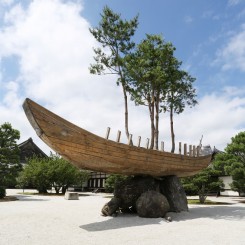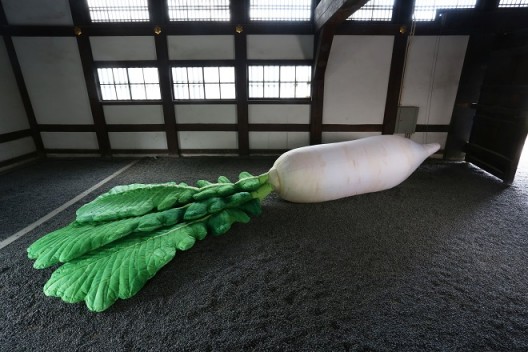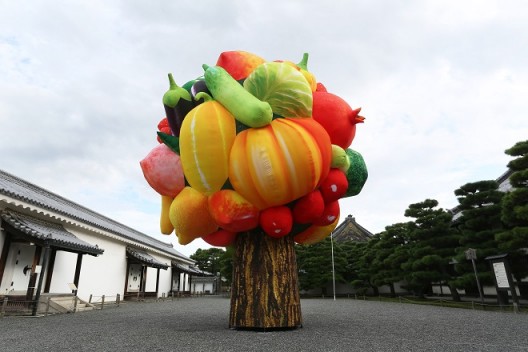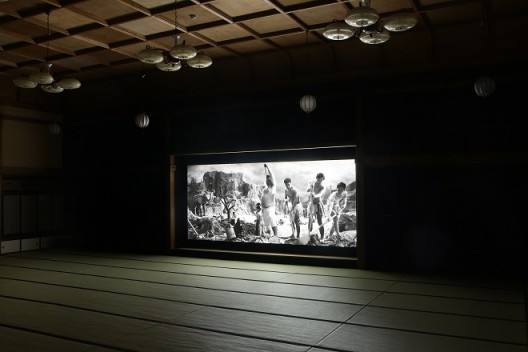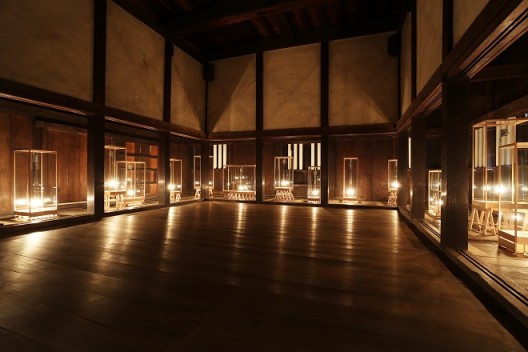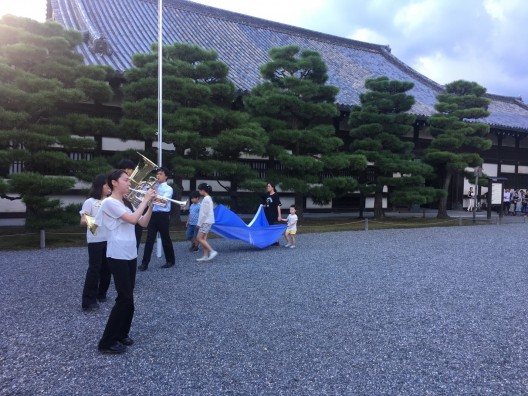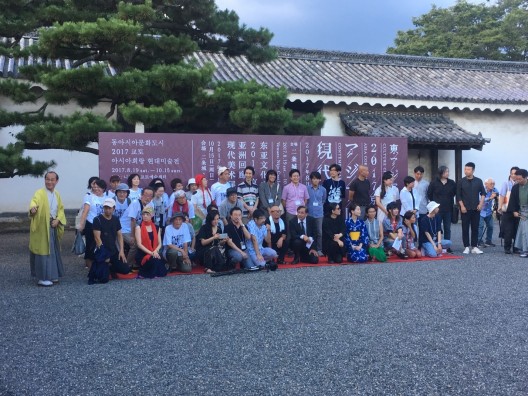As an exhibition featuring works by artists from Northeast Asia, “Asia Corridor Contemporary Art Exhibition” could have the potential to delve into some rather interesting and seldom-broached issues in this region. As a state-led cultural platform, it was perhaps unsurprising that the exhibition spoke in somewhat official tones—promoting tourism, harmony in East Asia, and the cultural relevance of Kyoto—with an abundance of crowd-pleasing works and a reliance on the usual A-list artists. Still, over the sound of the loudspeakers we could detect the whispers of artists and curators challenging the narrative within the exhibition narrative and showcasing the artists of the Kansai region.
The exhibition “Asia Corridor” was itself spread between two very different venues: the stunning 17th-century Nijo Castle, ornately embellished with gold and once the symbol of the Tokugawa Shogunate’s power, and Kyoto Art Centre, a former Meiji-era primary school. A number of works addressed the site-specificity of this latter space with varying degrees of sophistication. Horio Sadaharu + On-Site Art Squad KUKI produced the work “Atarimae-no-koto-Paint Placement”—a collection of snipped-up art fliers which clad the walls much like a mosaic of bygone exhibitions, which spoke not only to the fleeting nature of contemporary art but also to the tradition of earlier works which may have graced the walls of this building when the halls were filled with the pitter-patter of primary school students.
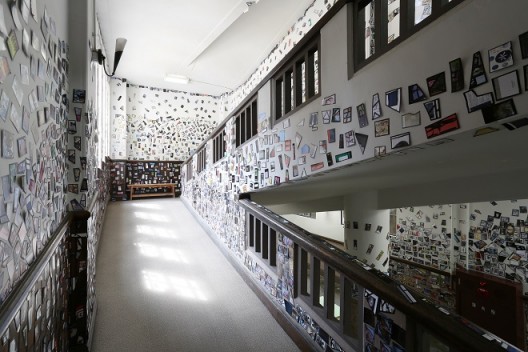
Installation view of Horio Sadaharu + On-Site Art Squad KUKI, “Atarimae-no-koto-Paint placement and so on”, 2017 (Photo: Koroda Takeru)
堀尾贞治+现场艺术集团“空气”的作品《Atarimae-no-koto-Paint placement and so on》,展览现场,2017(拍摄:Koroda Takeru)
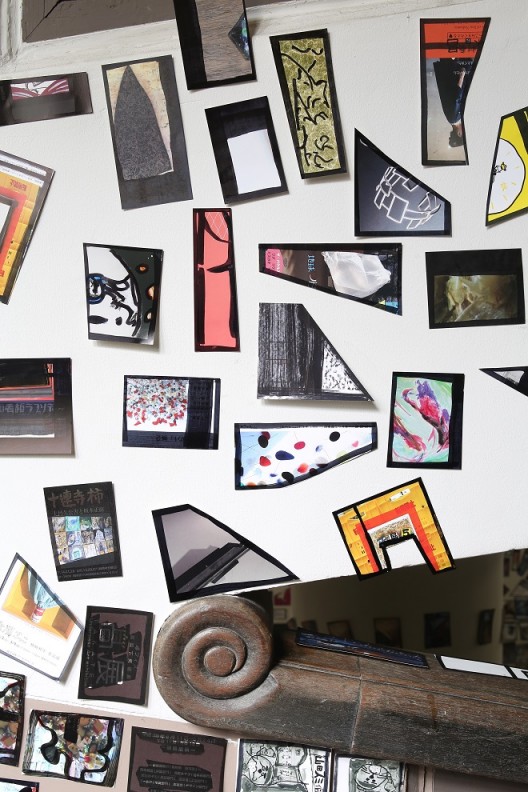
Installation view of Horio Sadaharu + On-Site Art Squad KUKI, “Atarimae-no-koto-Paint placement and so on”, 2017 (Photo: Koroda Takeru)
堀尾贞治+现场艺术集团“空气”的作品《Atarimae-no-koto-Paint placement and so on》,展览现场,2017(拍摄:Koroda Takeru)
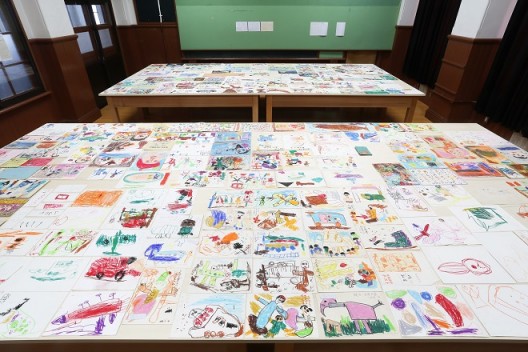
Nakahara Kodai, “Educational”, installation of works from around 1963–1977, 2016, 2017 (Photo: Koroda Takeru)
中原浩大《Educational》,展出了1963-1977年、2016年、2017年的作品(摄影:Koroda Takeru)
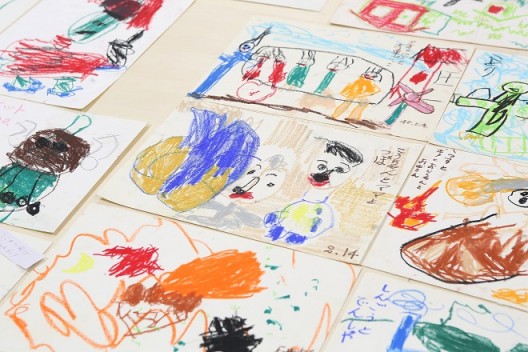
Nakahara Kodai, “Educational”, installation of works from around 1963–1977, 2016, 2017 (Photo: Koroda Takeru)
中原浩大《Educational》,展出了1963-1977年、2016年、2017年的作品(摄影:Koroda Takeru)
Nakahara Kodai’s work also responded to the pedagogical setting with an installation which takes the development and creation of the artist as its subject. Adopting the role of the curator, Kodai mounted his own retrospective that featured works collected by his father before Kodai was anointed as “artist”. The work questions the arc of artistic careers: when is that exact moment when one is recognized as an artist, and what exactly makes work produced after this moment “art” as opposed to mere intellectual curiosity or a cultural pastime.
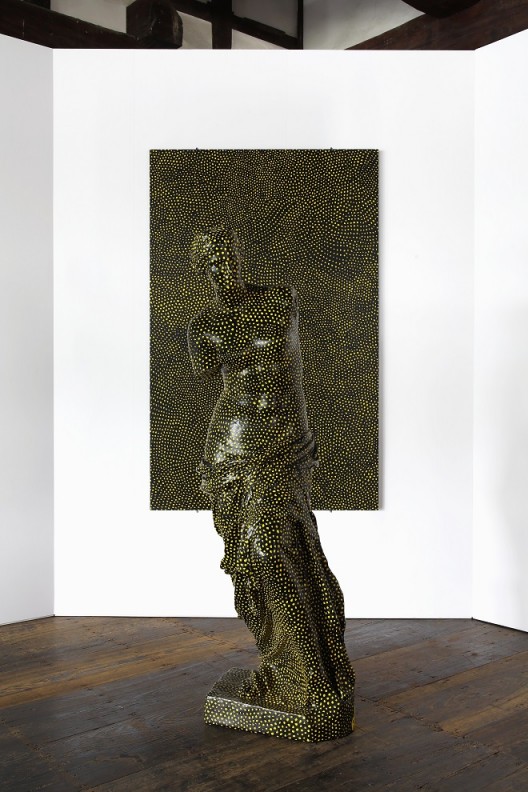
Yayoi Kusama, “Statue of Venus Obliterated by Infinity Nets (Y),” 1998 (TAKAHASHI Collection)
草间弥生《Statue of Venus Obliterated by Infinity Nets (Y)》,1998(高桥美术馆 )
While there were some very strong individual works, the exhibition at times felt like a checklist of prominent Asian artists. This early Yayoi Kusama work, “Statue of Venus Obliterated by Infinity Nets (Y)”, stuck out as particularly odd, being somewhat dated and seeming not to dialogue with either the venue or the other works. And then we learned that it was “the only one they could get” because the famously mercurial artist was simply not in the mood; one wonders why she was still included. This and the abundance of eye-popping Choi Jeonghua works bursting forth from the sober surroundings of Nijo Castle indicated the expectations for a popular appeal.
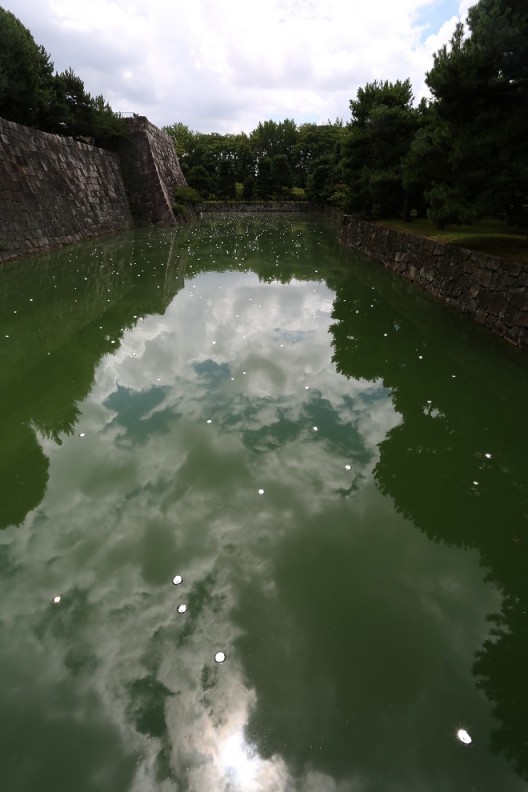
Mishima Ritsue, “Light Is Always There”, 2017 (Photo: Koroda Takeru)
三岛律惠《Light Is Always There》,2017(摄影:Koroda Takeru)
More understated site-specific works included Mishima Ritsue’s work, with glass bubbles floating on the surface of the moat like drops of mercury, and Kimsooja’s “Encounter—A Mirror Woman”. Known for her large-scale mirror installations, among others, Kimsooja presented another work in her “Mirror Woman” series which echoes her earlier mirror installation in Palacio de Cristal, Madrid. Unlike previous, more monumental works, this one seemed understated to the point of invisibility, with most guests shuffling through the hall onto more attention-grabbing work.
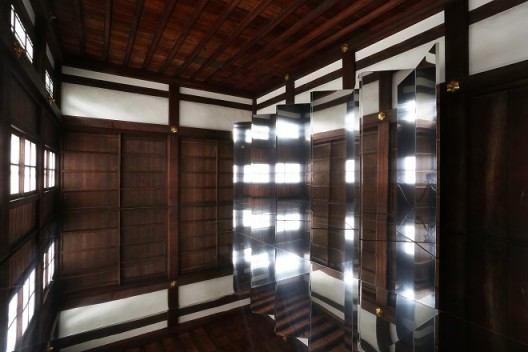
Kimsooja, “Encounter—A Mirror Woman”, site-specific installation consisting of mirror screen and mirror floor panels, dimensions variable, 2017 (Courtesy of Kimsooja Studio; photo: Koroda Takeru)
Kimsooja《Encounter—A Mirror Woman》,特定场域的装置作品,由镜面屏风和镜面地板构成,尺寸可变,2018(图片由Kimsooja工作室提供,摄影:Koroda Takeru)
Perhaps more effective as an architectural intervention was Hajime Imamura’s “In a Way that a Thing Does Not Have”. The rather awkward title still somehow encapsulates the concept of the work—of surfaces, expectations, and discoveries. The piece extends some ideas seen in his earlier exhibition “Dissolving My Self like a Mushroom” with its whimsical meddling of objects (in fact, playful alterations of objects seemed to be a common theme in Japanese art this season). A room in the Kyoto Art Centre (which acted as a classroom for “manners” back in the primary school days) was “made strange” by the artist who has altered its contents in almost imperceptible ways: a chest of drawers appearing to levitate, a coffee table with an oval cut out of its surface, a ceramic bowl perpetually spinning. Placed on a table beside a glass of water is a frog—which appears to be real but is not—juxtaposed with a pair of axolotl, an unearthly species of white salamander with translucent bodies and oversized neotenic heads, which appear to be toys but are in fact real.
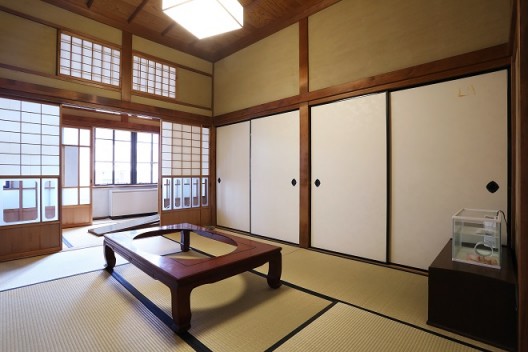
Imamura Hajime, “In a Way that a Thing Does Not Have”, 2017 (Photo: Koroda Takeru)
今村源《In a Way that a Thing Does Not Have》,2017(摄影:Koroda Takeru)
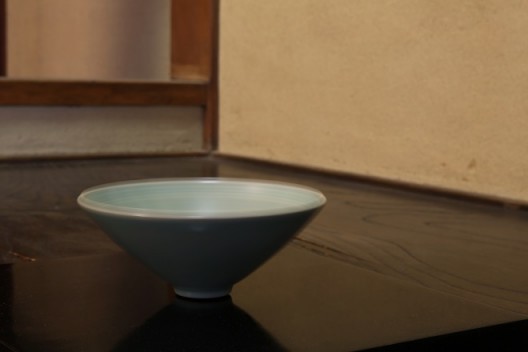
Imamura Hajime, “In a Way that a Thing Does Not Have”, 2017 (Photo: Koroda Takeru)
今村源《In a Way that a Thing Does Not Have》,2017(摄影:Koroda Takeru)
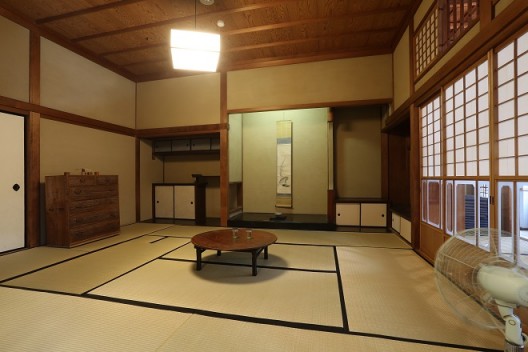
Imamura Hajime, “In a Way that a Thing Does Not Have”, 2017 (Photo: Koroda Takeru)
今村源《In a Way that a Thing Does Not Have》,2017(摄影:Koroda Takeru)
Also screened in a traditional room with tatami mats, Yang Fudong’s “Moving Mountains” (Yu Gong Yi Shan 愚公移山), which showed earlier this year at the Shanghai Center of Photography, played with surface and artifice, touching on how narratives are used to mold national consciousness. The film retells the classical Chinese fable of the “foolish” old man who takes on the formidable task of moving a mountain despite being ridiculed by detractors; impressed by this man’s gumption the gods decide to move the mountain for him. In Yang’s film we see certain tableaus which literally mimic Xu Beihong’s painting of the same subject, but with the same kind of stagey lighting and obvious use of sets as seen in Yang Fudong’s “Nightman Cometh”. In Yang’s version of the fable we watch an impoverished family of farmers chipping away at the mountain while men in business suits stride around importantly. Hard work, as symbolized by the prominence of the ox plodding around the set, is no longer rewarded by miracles.
Over at Nijo Castle—a fairytale setting in its own right—numerous moats and fortifications surround the inner courts (to which access was carefully guarded, with low-ranking visitors relegated to the outer chambers). Hisakado Tsuyoshi’s installation “Gale” used a castle watch tower to explore the politics of space and movement. Used in defense of the court, the tower sits on the boundary between the castle wall and the outlying world. Visitors enter the dark space to view light bulbs slowly swinging back and forth, and a wind howling in the stifling darkness of the hall while lights flicker over a staircase to the second floor. Periodically the lights dim as the storm waxes and wanes in a tangible metaphor of the effect of political actors on individual citizens.
During the Edo period when the castle was built, Japan largely followed an ideal of sakoku or national seclusion, where maritime travel and trade were largely restricted (in fact, such policies were shared by both Korea and China at different points in time, to varying degrees). Displayed on the grounds of the castle, Cai Guoqiang’s “Bonsai Ship” explores the conflict between this isolationism (the bonsai was used as a meditation aid for the literati) and the impulse towards commerce and conquest in a globalized world.
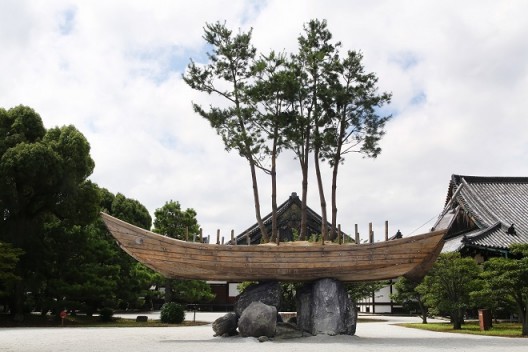
Cai Guo-Qiang, “Bonsai Ship: Project for Kyoto Culture City of East Asia”, 2017 (Photo: Koroda Takeru)
蔡国强《Bonsai Ship: Project for Kyoto Culture City of East Asia》,2017(摄影:Koroda Takeru)
Certainly, exchanges artistic or otherwise among East Asian states have been under much political strain of late. The artist group Xijing Men—composed of the artists Ozawa Tsuyoshi, Chen Shaoxiong (who recently passed away), and Gimhongsok—have been doing their part for East Asian unity . . . while thoroughly skewering the nation-state as though it were a tasty yakitori. Their work looks at how the concept of nation is performed, and questions its validity and usefulness through a series of absurd, meaningless and/or meaningful rituals. For “Asia Corridor”, the trio of artists from China, Japan, and Korea created something like a government office displaying videos and props from their performance—pieces of Kleenex stamped with numbers to represent the currency of a fictitious country called “Xijing”. In the video, we see three characters caving up a water melon (as one carves up land and influence) making various self-important pronouncements about the future of their still nascent country:
“The design of Xijing Art Museum should take into consideration the creation of a Xijing Biennale.”
“Xijing Airport should become the world’s smallest international airport.”
“Xijing Stadium must prepare to hold the Xijing Olympics.”
The artists presented previous works riffing on the Beijing Olympics—which is timely again as Japan gears to host its own Tokyo 2020 Olympics (residents are surely bracing for their own wave of slogans and hot air). In another video “The Life of the Xijing Presidents” we see other snippets of dialogue which recall heady discussions, evocative of some kind of heated politburo session: “Hypothetically mass ignorance turns into knowledge by the intervention of an intellectual who practices the theories in real life.” This last line, though grammatically stilted, quite strongly parodies the kind of self-crafted political mythologies, where intellectuals are cast as the guardians of the people, as the only ones capable of whittling down the views of the masses into something coherent, actionable, and enforceable.
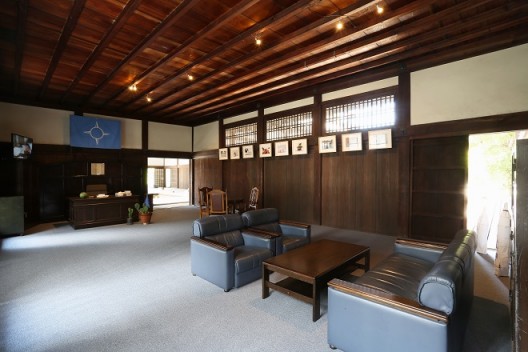
Xijing Men, “Chapter 4: I Love Xijing – The Daily Life of Xijing Presidents”, 2009, photo: KorodaTakeru
西京人《第四章:我爱西京——西京总统的日常生活》,2009,摄影:Koroda Takeru
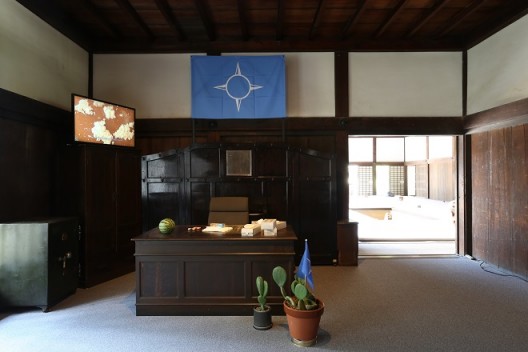
Xijing Men, “Chapter 4: I Love Xijing – The Daily Life of Xijing Presidents”, 2009, photo: KorodaTakeru
西京人《第四章:我爱西京——西京总统的日常生活》,2009,摄影:Koroda Takeru
Most comical was the “National Defense of Xijing” which featured two characters protecting a storefront with garden tools which they got from an invader with a paper bag over his head: “This is absolutely needed to protect the lives and properties of all our nationals,” the subtitles proclaim.
After a sweaty afternoon standing under the baking sun, guests with T-shirts glued to torsos were politely corralled towards the stage for the opening ceremony. With thimbles of sake in hand, we expected the usual kimonos and yukatas, group photos, and interminable speeches—and our expectations were fully met. But then before the ribbon was cut, Xijing Men burst forth with their own bit of pageantry, a performance complete with a brass band and a flag-raising ceremony—like some of the best works in this exhibition, their ironic intervention blended right in.
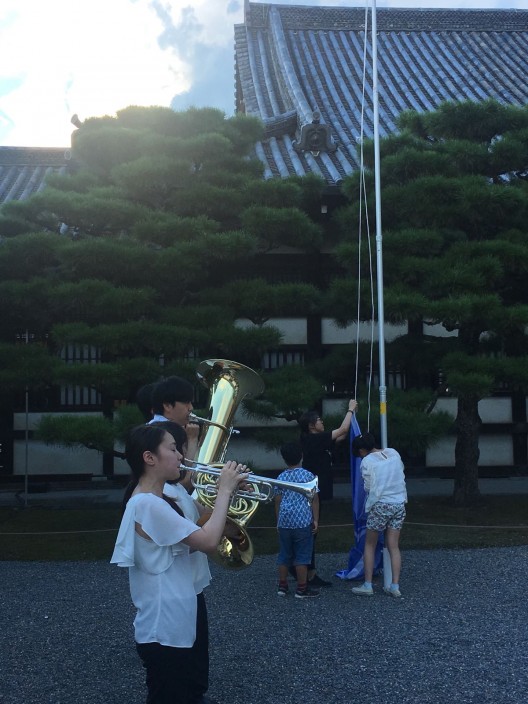
Credit top three photos: Xijing Men performance and opening ceremony, photo: Rebecca Catching
西京人表演和开幕仪式,摄影:林柏丽
